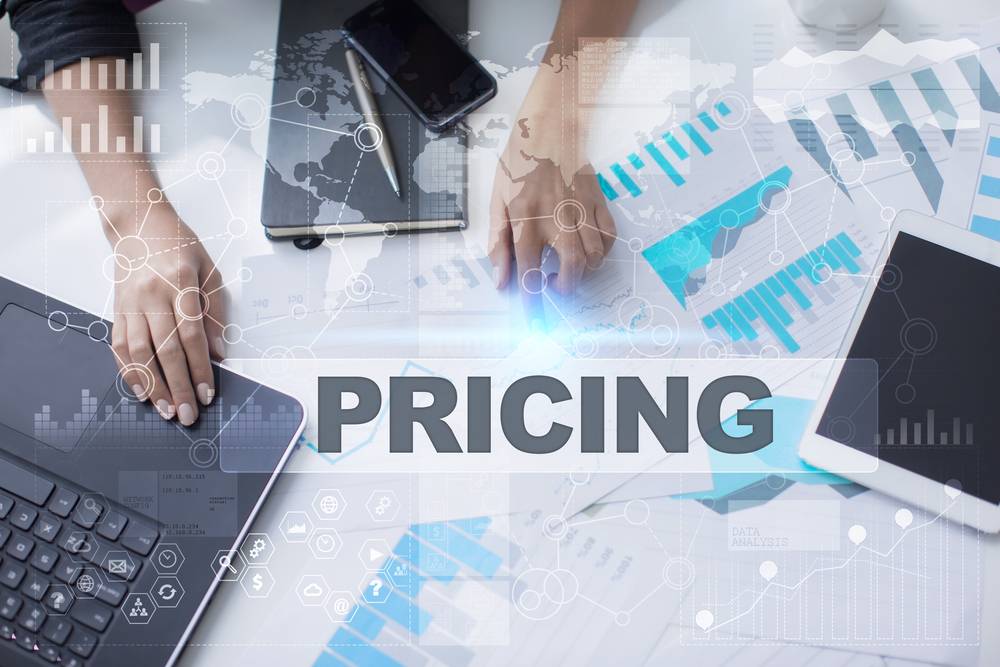Pricing your products is one of the most challenging aspects of retail strategy. If you set prices too low, then you miss out on revenue, but if you go too high, then you won’t sell any product. How can your business find the perfect price?
Retailers use a variety of pricing strategies, such as cost-plus and value-based price setting, to determine a fair cost for their goods and services. They will also frequently test their product prices and change them as needed to meet market demands. The following guide will therefore begin by examining some of the factors that companies use to determine product prices. It will then discuss four prominent pricing strategies, addressing their benefits and drawbacks. It will also help you understand how retailers test their prices and make changes to them.

Factors to Consider when Pricing your Products
As you begin the pricing process, you will need to consider key elements that should impact the retail cost of your product. These factors include:
- Your target customer base,
- Production costs,
- Competitors‘ pricing,
- Ideal profit margins, and
- Add-on services.
Each of these aspects will play an important role in determining the final price of your product. In fact, you will consider these elements as we review the four most common pricing methods below.
Value-Based Pricing
The first pricing strategy that we will address is called value-based pricing. This model sets prices according to consumers’ perceived value of an item. In essence, with value-based pricing, you charge what your customers are willing to pay. To use this method effectively, you will need to collect marketing data to understand what your customers value and how they ascribe value to your product. Businesses most often seek this information through customer surveys. By analyzing this data, you can determine what services or features add value to a product, and you can adjust your pricing and product design.
Value-based pricing should be a component of any pricing strategy. Even if you use another method to price your product, the market research that you conduct to make a value assessment can benefit your business and marketing strategy tremendously. Service and SaaS companies, which have low production costs, also use this method to determine how consumers value their offerings. However, using a value-based model requires time and resources that a business may not have. Small businesses and start-ups might select a different price-setting method for this reason.
Competitor-Based Pricing
Companies also use competitor-based pricing to select a fair cost for their product or service. In this model, your business will base your prices on those of your competition. Some businesses use competitive pricing to become the lowest cost offering in a market. Similarly, premium brands might employ this model to keep their prices at the top of their segment, which is sometimes referred to as price skimming.
While knowing your competition is a key component of any sales strategy, analysts do not recommend basing your prices solely on your competition. Undercutting the competition, for example, might work temporarily for market penetration, but it is not a sustainable strategy. Your business should therefore incorporate elements of competitive pricing without relying it entirely. Many large retailers use price match guarantees to position themselves competitively without becoming the lowest cost offering on all levels.
Cost-Plus Pricing
Cost-plus pricing is a fundamental business strategy. This model bases your prices on expenses and your desired profit margin. To calculate a price using this method, you will begin by calculating your production costs. These include the cost of the product, labor, and other expenses that you incur during the course of business. Next, you will determine your desired profit margin. Retailers often use 50%, which might vary depending on your company. So, if you have a product that costs $20 to produce and the desired profit margin of 50%, then your item cost would be $30.
Many businesses use cost-plus pricing for its simplicity and financial soundness. This method ensures that you make money on every purchase. However, cost-plus price setting does not account for external factors like customers and competition. For example, you might price a product at $100 when people would be willing to pay $150, causing you to miss out on valuable revenue. The cost-plus model is a good way to easily set sound prices, but you must account for externalities and customer feedback.

Dynamic Pricing
The fourth price-setting strategy that we will discuss is dynamic pricing. This method uses variable prices that fluctuate based on the purchaser or the time of the purchase. Dynamic prices are most commonly used in travel, tourism, and entertainment sectors that have a distinct high and low seasons. Airlines, for example, set ticket prices higher during peak travel times like the holidays to make up for lost revenue during slower periods.
In general, dynamic price-setting is only acceptable to consumers in specific industries. A consumer will understand why a hotel might charge higher rates during a major event, but they will not tolerate fluctuations in prices of household goods. Even in industries where dynamic pricing is common, customers do not always believe that this pricing strategy is fair. Many concertgoers have protested Ticketmaster and similar companies for hiking prices during popular shows. You should therefore only employ dynamic pricing in specific circumstances where the benefits outweigh the risks.
Incorporating Different Pricing Methods
Most analysts recommend using a combination of pricing strategies in price-setting. For example, the cost-plus method is financially sound, but it fails to account for external factors. However, as a supplement to a competition-based approach, it ensures that you do not fail to make a profit by setting prices too low. Likewise, a travel agency might combine dynamic and value-based pricing to set peak season prices at a rate that consumers will accept. The majority of successful businesses use a combination of pricing strategies to find the best price possible for their products.
Testing your Product Price
Once you have established a fair price for your products, you will need to test it. Testing a product’s price gives you insight into demand elasticity. This marketing concept refers to how consumers’ desire for a good or service might differ in response to a price change. Therefore, you should carefully outline the goals of your price test and the information that you hope to attain prior to designing your test.
Companies use three models for price testing: cost-plus, direct research, and A/B. The cost-plus test is similar to its namesake pricing method. It tests whether you make a profit from your current pricing. To use this model, you subtract your production costs from your product’s price. Then, you use the remainder to calculate your profit margin. For example, you sell a product for $100 with a $50 production cost. This leaves you with $50, a 50% profit margin.
Direct research is another way to test your product’s prices. This method uses marketing research to determine whether your price is fair. To use direct research, you must examine information like:
- Purchasing data,
- Competition prices,
- Customer surveys, and
- Marketing studies.
These sources can give you a picture of whether your price is reasonable. Suppose, for example, that you examine competitors’ pricing and notice that your price is substantially higher. This might encourage you to reexamine your pricing to market standards.
The final testing strategy is A/B testing. This method runs a test with two prices to see which one yields the most revenue. When running this test, you should not price the same product differently. Instead, you should select similar products or brands. As you test the two prices, you must monitor revenue to see which pricing was most effective.
When You Should Change your Prices
Pricing is not something that you can set and forget. Businesses must constantly check their products’ prices to make sure that they are generating revenue. Your company must understand the signs that a price change is on the horizon. These include:
- Increased business expenses,
- Competitor price changes,
- New markets,
- Frequent sales and promotions,
- Customer feedback, and
- Fluctuating demand.
These factors can indicate that your business should reevaluate its pricing strategy. If you notice one of these issues within your company, then you should begin running tests and conducting research to determine whether you need to change your price.
How to Perfectly Price your Product
So, how can your business price its products perfectly?
Unless it’s free, there is no perfect price for every customer. Someone will complain even if your prices are thoroughly vetted. In retail, you will deal with rejection, and your product will always be too expensive for someone.
You can, however, get close to perfection by choosing a price that meets your business needs. Using the right pricing model will help you find a fair price that will keep your business financially sound. Likewise, frequent testing will ensure that you can make changes as necessary to keep consumers buying. By using the right model and doing your homework, your business can find the perfect price.
For more information, please refer to the following pages:
